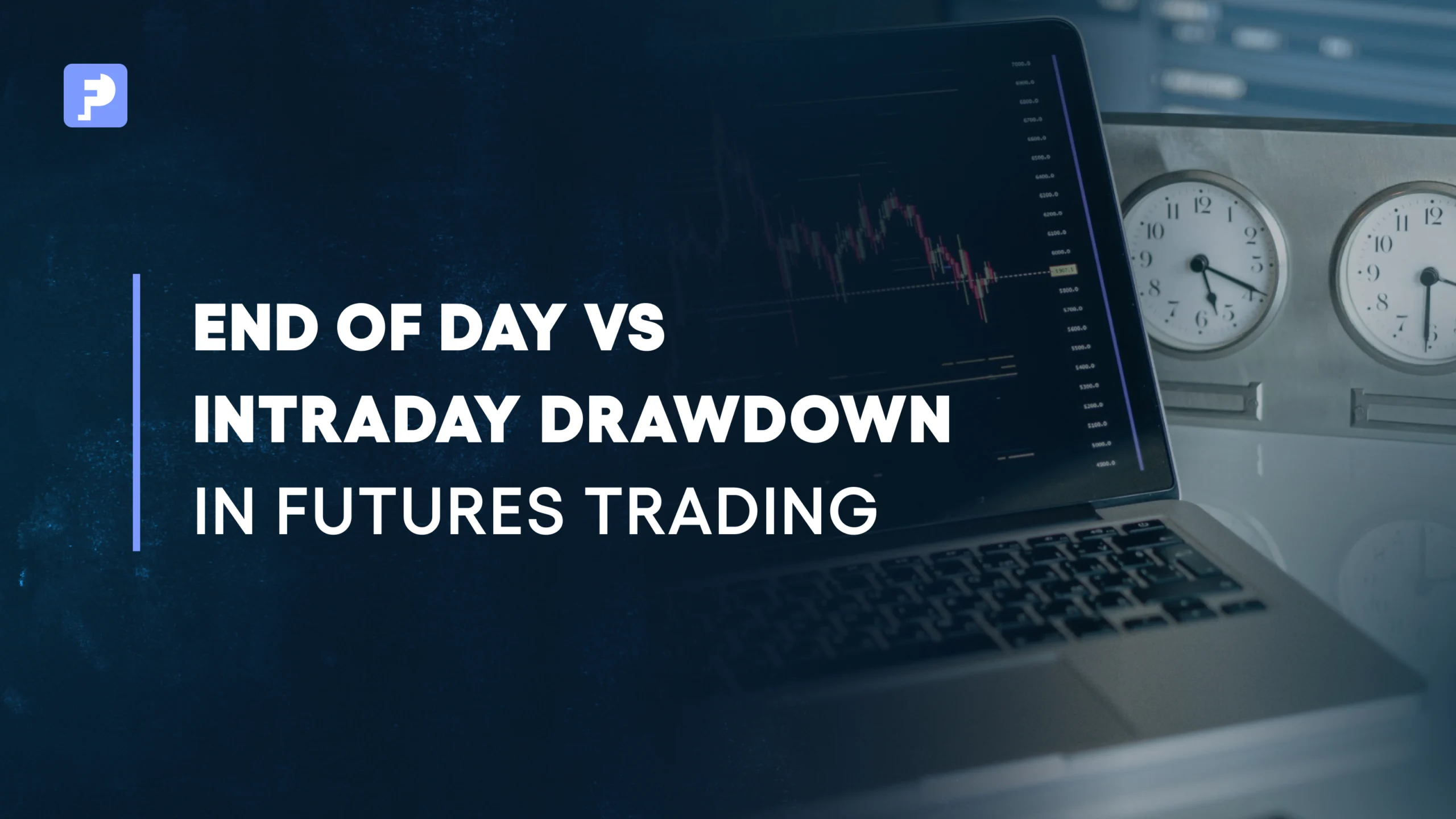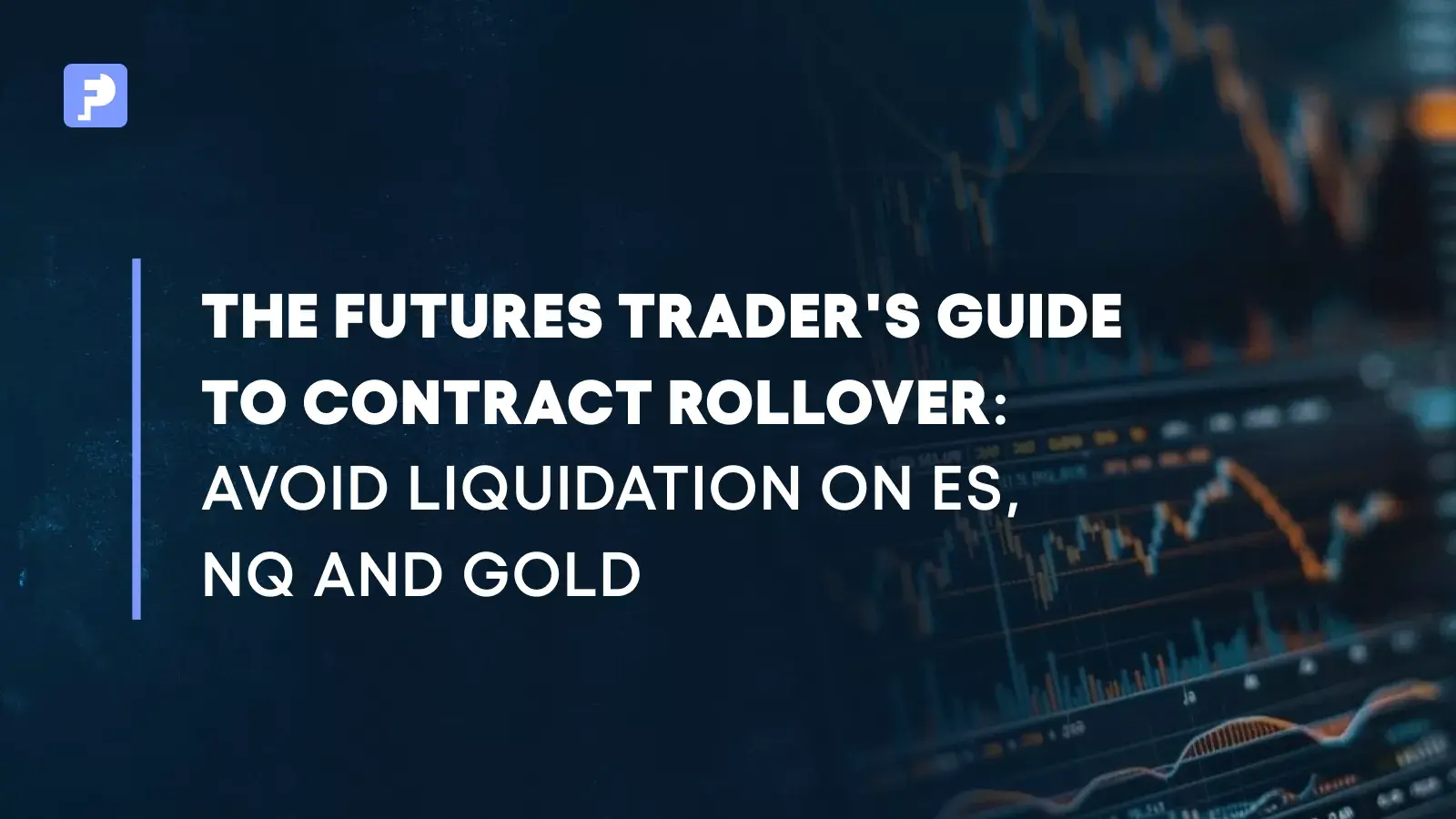
End of Day vs Intraday Drawdown in Futures Prop Trading: What Traders Need to Know
Drawdown rules define the boundaries of every funded futures account. They dictate how much a trader can lose before disqualification. For prop traders, the type of drawdown, whether calculated at the end of the day (EOD) or in real time intraday, can completely change how you manage risk, size trades, and handle volatility.
This guide breaks down the differences between end-of-day and intraday drawdown, shows their pros and cons, and explains how FunderPro Futures applies trailing drawdown rules to keep trading disciplined and fair.
What is drawdown in futures prop trading?
In futures prop trading, drawdown is the decline from a peak account balance to a lower point, usually due to trading losses.
Key terms:
- Account balance – cash in your account excluding unrealised gains/losses.
- Equity – account balance plus open trade profit or loss.
- Drawdown – the difference between peak equity/balance and the lowest point reached.
Prop firms set strict drawdown limits to protect both their capital and trader discipline. Breaching them usually results in account termination or reset.
End of Day Drawdown explained
Definition: End of day (EOD) drawdown is calculated based on your account balance after the trading session closes, not during the day. Open trade fluctuations do not matter unless they are realised by the close.
Example:
- Starting balance: $50,000
- Maximum EOD drawdown: $2,500
- Closing balance after losses: $48,000 → Still within the rule, as the balance did not drop below $47,500 at day’s end.
Pros:
- Less stressful intraday, as temporary swings do not cause violations.
- Gives traders room for strategies with deeper intraday swings.
Cons:
- Can mask risk during the day, encouraging traders to overleverage.
- Losses realised late in the session may still breach limits.
Intraday Drawdown explained
Definition: Intraday drawdown tracks real-time equity, including open trades. If your account equity dips below the limit even for a second, the rule is breached.
Example:
- Starting balance: $50,000
- Intraday trailing drawdown: $2,500
- Account equity dips to $47,300 during an open trade → The rule is breached immediately, even if the balance later recovers.
Pros:
- Strong discipline, as traders must respect risk.
- Reduces likelihood of “gambling” with firm capital intraday.
Cons:
- Less forgiving during volatility spikes.
- Requires tight position sizing and active monitoring.
Key differences
| Factor | End of Day Drawdown | Intraday Drawdown |
|---|---|---|
| Calculation | Balance at daily close | Real-time equity during trading |
| Tolerance | Allows intraday swings | Any intraday breach ends account |
| Stress level | Lower, more flexible | Higher, requires constant control |
| Risk behaviour | Encourages wider swings | Enforces strict intraday discipline |
| Common usage | Some evaluation accounts | Common in live or trailing models |
Scenario:
- Trader A (EOD rule) sees equity fall to $47,300 midday but closes at $48,200 → safe.
- Trader B (intraday rule) breaches at $47,300 → account closed.
How to trade within drawdown rules
- Size conservatively: Avoid maxing contracts when volatility is high.
- Respect cushion: Build equity above the starting balance before scaling up.
- Check trailing behaviour: Some rules trail with equity until it returns to the starting balance.
- Use stops: Prevent deep intraday equity dips.
- Avoid revenge trading: Protect capital to live another day.
(See our blog on Avoiding Trailing Drawdown Violations in Futures Prop Trading for more practical approaches.)
Common mistakes traders make
- Ignoring unrealised losses: Believing only closed trades matter when intraday rules apply.
- Scaling up too fast: Adding contracts before building enough cushion.
- Trading through high-volatility events: Economic data and Fed decisions can breach limits in seconds.
- Not checking rule type: Each prop firm defines drawdown differently.
(Also read Leverage Management in Futures Trading to align margin with risk.)
FunderPro’s approach to drawdown
At FunderPro Futures, rules are designed to balance opportunity and control:
- 6% maximum trailing drawdown of starting balance.
- The drawdown trails with equity gains.
- Once equity returns to the starting balance, the drawdown stops trailing, giving traders room to scale sustainably.
- Weekly rewards are available after 10 active trading days, provided rules are respected.
This approach ensures traders can grow responsibly without sudden disqualification from minor intraday volatility.
FAQ
EOD is calculated at session close; intraday measures real-time equity.
A drawdown limit that follows account equity upwards until it locks at the starting balance.
Yes, under intraday rules, unrealised losses count against equity.
Risk appetite and business models differ. Some prioritise trader freedom (EOD); others focus on risk control (intraday).
Use tighter stops, smaller position sizes, and avoid trading into volatile announcements.
The account is closed or reset, but traders can reapply under program terms. [Verify exact reset conditions per policy.]
Final thoughts
Drawdown management is at the heart of every futures funded account. Knowing whether your firm applies end of day or intraday rules can change your strategy completely. The key is to respect risk, build a cushion before scaling, and trade within limits.
Mastering drawdown discipline is what separates consistent traders from frequent resetters.
Start Trading with FunderPro Futures and put your discipline into practice.
External references
All trading in FunderPro Futures takes place in a demo-style environment and in off-exchange futures.



